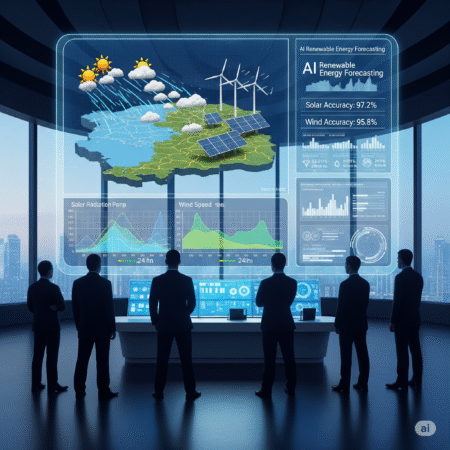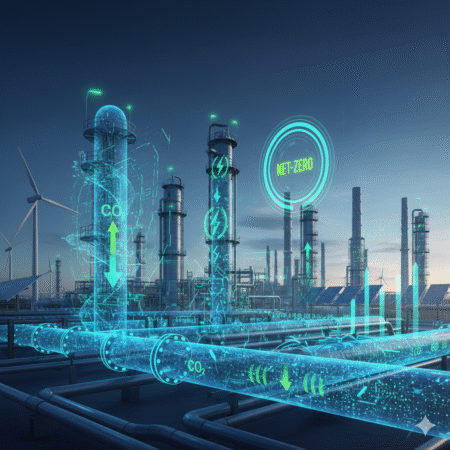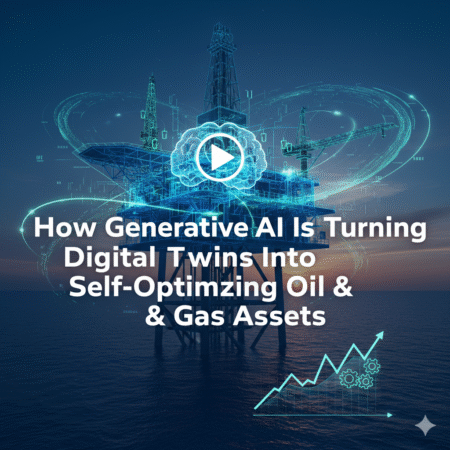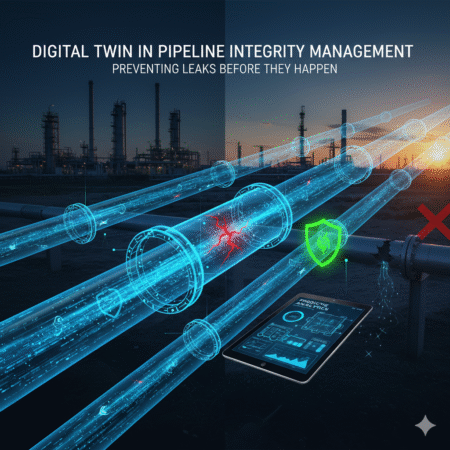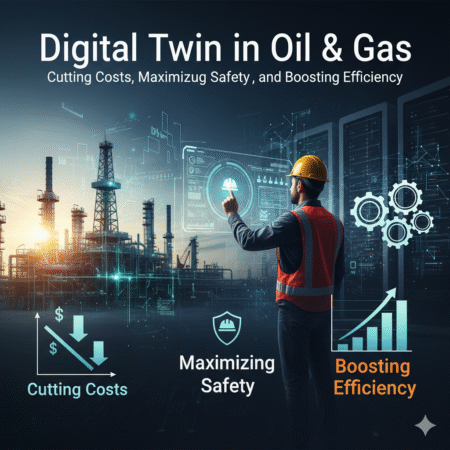
- Introduction: Why Forecasting Accuracy Matters in Renewable Energy
- Traditional Forecasting vs AI-Powered Forecasting
- Key AI Techniques for Renewable Energy Forecasting
- Data Sources that Fuel AI Forecasting
- Case Studies: AI in Solar & Wind Forecasting
- Business Impact: Why Accuracy = Reliability + Profitability
- Overcoming Data Quality Challenges in AI Renewable Energy Forecasting
- Overcoming Data Quality Challenges in AI Renewable Energy Forecasting
- Overcoming Data Gaps and Uncertainty in Renewable Energy Forecasting
- The Future of AI in Renewable Energy Forecasting
- Summary
- Call-to-Action (CTA)
- FAQ
Introduction: Why Forecasting Accuracy Matters in Renewable Energy
When people talk about renewable energy, the spotlight usually lands on shiny solar farms or massive offshore wind parks. But here’s the underrated truth: the real bottleneck isn’t generation-it’s forecasting accuracy. Without it, even the most advanced renewables can become unreliable for the grid.
Let’s break it down.
Why Forecasting Accuracy Matters
- Grid Stability: Sudden weather changes cause huge fluctuations in renewable output, risking blackouts or costly backup generation.
- Market Competitiveness: Energy traders rely on accurate predictions to avoid penalties and maximize profits.
- Financial Impact: Every 1% gain in accuracy can save millions in balancing costs for utilities.
- Decarbonization Goals: Reliable forecasting accelerates renewable integration into national grids, reducing dependency on fossil fuels.
The Real-World Problems with Poor Forecasting
- Solar farms underpredict → miss revenue from underbidding in energy markets.
- Wind farms overpredict → forced curtailment and penalties for failing delivery.
- Grid operators → struggle to schedule reserves, leading to higher system costs.
Quick Comparison: Traditional vs Accurate Forecasting Impact
| Factor | Poor Forecasting (Traditional) | High-Accuracy Forecasting (AI-Enhanced) |
|---|---|---|
| Grid Stability | Frequent imbalances, higher reserve needs | Stable integration, reduced reserves |
| Financial Impact | Millions lost in curtailment & penalties | Millions saved through optimization |
| Market Participation | Limited bidding accuracy | Competitive, optimized trading |
| Renewable Adoption | Slower, grid operators skeptical | Faster, higher penetration into grid |
Key Insight
Forecasting isn’t just “nice to have.” It’s the linchpin of renewable energy adoption. Without accurate forecasting, renewables can’t compete head-to-head with fossil fuels in reliability. With it, however, they not only compete-they win.
This is why AI-driven forecasting has shifted from a futuristic idea to a core necessity in 2025 and beyond.
Traditional Forecasting vs AI-Powered Forecasting
Before AI entered the scene, renewable energy forecasting was mostly about crunching weather models and statistical patterns. It worked “okay” in stable conditions-but when the clouds rolled in or the wind shifted suddenly, accuracy went out the window.
Now, with AI, forecasting has taken a giant leap. Let’s unpack the difference.
Limitations of Traditional Forecasting
- Numerical Weather Prediction (NWP): Relies on complex physics equations, but updates are slow (every 6–12 hours).
- Statistical Models: Use historical averages, but can’t capture extreme weather or sudden fluctuations.
- Linear Assumptions: Weather and energy output are non-linear, making traditional regression models prone to error.
- Lag in Real-Time Response: Traditional systems aren’t designed for live adaptation.
Why AI Outperforms
- Adaptive Learning: AI continuously improves with new data-unlike static statistical models.
- Non-Linear Pattern Recognition: Machine learning (LSTM, CNN) captures chaotic weather dynamics better.
- Faster Updates: AI models process SCADA, IoT, and satellite data in near real-time.
- Scalability: AI can integrate multiple datasets-weather, market prices, grid loads-into one prediction engine.
Traditional vs AI-Powered Forecasting
| Feature | Traditional Methods (NWP, Stats) | AI-Powered Forecasting |
|---|---|---|
| Accuracy | Moderate (error 15–25%) | High (error reduced to 5–10%) |
| Update Frequency | Every 6–12 hours | Real-time / every few minutes |
| Data Handling | Limited (mainly weather) | Multi-source (weather, SCADA, IoT, markets) |
| Adaptability | Low – static models | High – learns & adapts over time |
| Short-Term Forecasting | Weak in ultra-short-term (<1 hr) | Strong in ultra-short-term & day-ahead |
Key Insight
AI doesn’t replace weather physics-it augments it. The sweet spot is combining physical models with AI, creating hybrid forecasting systems that handle both large-scale weather trends and micro-level fluctuations.
In fact, leading utilities in the US and Europe are already reporting 15–20% accuracy improvements after integrating AI forecasting into their grid operations. That’s the difference between treating renewables as a “problem” versus seeing them as a reliable backbone of the energy mix.
Key AI Techniques for Renewable Energy Forecasting
AI isn’t just a buzzword here-it’s a toolkit. Different AI techniques bring different strengths to the table, and the smartest operators don’t rely on just one. They mix and match depending on the type of renewable, data availability, and time horizon.
Let’s break down the proven AI techniques that are boosting solar and wind forecasting today.
Machine Learning & Deep Learning
- LSTM (Long Short-Term Memory): Great for time-series data like wind speed or solar irradiance. Captures temporal patterns missed by linear models.
- CNN (Convolutional Neural Networks): Perfect for analyzing satellite imagery → cloud movement, shading effects on PV farms.
- Transformers: The same tech behind ChatGPT is being used for energy forecasting-great at handling large, complex datasets.
Ensemble Models
- Combine multiple models (e.g., NWP + ML + statistical).
- Reduce bias from relying on a single model.
- Proven to increase accuracy by up to 10–15% over standalone approaches.
Hybrid Models (Physics + AI)
- Physics-based weather models (NWP) provide large-scale patterns.
- AI fine-tunes with real-time local data (SCADA, IoT).
- Example: Predicting PV output by combining solar irradiance equations + LSTM.
- This approach bridges the “trust gap” with grid operators who prefer physics-based transparency.
Generative AI & Digital Twins (2025 – 2030 Trend)
- Generative AI: Creates synthetic weather scenarios to test model robustness.
- Digital Twins: Virtual replicas of wind farms/solar plants to simulate and predict real-world behavior under changing conditions.
- Helps operators prepare for extreme, rare events (storms, sudden cloud bursts).
AI Techniques at a Glance
| AI Technique | Best Use Case | Strengths | Limitations |
|---|---|---|---|
| LSTM / ML Models | Short-term forecasting (minutes–hours) | Captures temporal patterns, fast learning | Needs lots of quality data |
| CNN (Imagery Analysis) | Cloud detection, solar irradiance | Strong with visual/satellite data | Heavy computational demand |
| Ensemble Models | General accuracy improvement | Robust, reduces bias | Complex integration |
| Hybrid (Physics + AI) | Grid-level trust & accuracy | Transparent + adaptive | Still limited by physics |
| Generative AI & Digital Twin | Scenario testing, extreme weather | Handles rare/unpredictable events | Emerging, not yet mainstream |
Key Insight
No single AI model rules them all. The leaders in 2025 are those who blend techniques-physics for credibility, ML for adaptability, and generative AI for future-proofing.
That’s why “AI forecasting” isn’t one tool-it’s a stack of techniques, working together to squeeze out every possible % of accuracy.
Data Sources that Fuel AI Forecasting
AI models are only as good as the data they feed on. If the input is messy, incomplete, or outdated, even the smartest algorithm will fail. In renewable energy forecasting, the magic happens when you combine multiple data sources-from weather satellites to real-time SCADA sensors.
Let’s dive into the key data streams powering next-gen forecasting.
Weather Data
- Numerical Weather Prediction (NWP): Still the backbone for large-scale forecasts. Provides temperature, wind speed, irradiance, humidity.
- Local Weather Stations: Offer microclimate data, filling the gaps where NWP resolution is too coarse.
- Satellite Observations: Cloud cover, aerosol movements, and atmospheric layers-critical for solar forecasting.
SCADA & IoT Data
- Wind Turbines: Real-time data on rotor speed, yaw angle, blade pitch, and power output.
- Solar Farms: Module temperature, inverter performance, and actual PV output.
- IoT Sensors: Granular site-specific conditions (e.g., dust on panels, turbulence at turbine hubs).
- These datasets help AI detect anomalies and adapt predictions dynamically.
Remote Sensing & Satellite Imagery
- Cloud Tracking: AI + CNN models analyze cloud movement and density.
- Aerosols & Pollution Levels: Affect solar irradiance but often overlooked in traditional models.
- Terrain & Land Use Mapping: Impacts wind flow and turbulence patterns.
Data Sources at a Glance
| Data Source | Type of Info Provided | Best Use Case | Limitations |
|---|---|---|---|
| NWP Models | Large-scale weather patterns | Day-ahead & week-ahead forecasts | Coarse resolution, slower update |
| Local Stations | Microclimate conditions | Site-specific adjustments | Limited coverage |
| SCADA Sensors | Real-time turbine/PV performance | Ultra-short-term corrections | Hardware costs, maintenance |
| IoT Devices | Environmental/site-specific anomalies | Panel soiling, turbine vibration alerts | Data quality consistency issues |
| Satellite Data | Clouds, aerosols, land mapping | Cloud forecasting, irradiance accuracy | High computational demand |
Key Insight
AI forecasting thrives when these diverse data streams are integrated into a single pipeline. The goal isn’t just prediction-it’s situational awareness. By combining weather models, on-site IoT sensors, and satellite imagery, operators can anticipate both the big picture and the micro-events that impact output.
In other words: the richer and more real-time the data, the sharper the forecast.
Case Studies: AI in Solar & Wind Forecasting
It’s one thing to talk theory. It’s another to see how AI forecasting actually performs in real-world solar farms and wind projects. The numbers are clear: AI consistently delivers double-digit improvements in accuracy, which translates into millions saved and higher reliability.
Case Study 1: Solar Power Forecasting
- Challenge: PV output is highly sensitive to cloud movement, dust, and shading. Traditional models often miss short-term fluctuations.
- AI Approach: CNN models trained on satellite imagery + ensemble methods combining NWP with local SCADA data.
- Result:
- Accuracy gains of 20–30% compared to statistical baselines.
- Ultra-short-term forecasts (5–15 minutes ahead) improved by nearly 40%.
Case Study 2: Wind Power Forecasting
- Challenge: Wind speed and turbulence are chaotic; small changes at hub height can cause huge output swings.
- AI Approach: LSTM time-series models + hybrid physics-AI to capture both macro and micro weather effects.
- Result:
- Forecast error reduced from 20% → 8–10% in day-ahead predictions.
- Ultra-short-term (<1 hour) forecasting error dropped by 50%.
Case Study 3: Global Implementations
- US: PJM Interconnection uses AI to reduce balancing costs, saving hundreds of millions annually.
- UK: National Grid ESO applies AI for wind power integration, boosting grid stability.
- EU: Spain and Germany deploy AI forecasting to optimize solar bidding in day-ahead markets.
- Canada: Wind-rich provinces leverage AI to minimize curtailment during peak demand shifts.
Case Study Comparison: Solar vs Wind Forecasting with AI
| Aspect | Solar Forecasting (AI) | Wind Forecasting (AI) |
|---|---|---|
| Main Challenge | Cloud cover, irradiance shifts | Wind turbulence, hub height changes |
| Best AI Technique | CNN (satellite) + Ensemble models | LSTM + Hybrid (Physics + AI) |
| Accuracy Gains | 20–30% improvement | 15–20% improvement |
| Ultra-Short-Term | Up to 40% better than baseline | Up to 50% error reduction |
| Market Impact | Optimized solar bidding | Reduced reserve requirement |
Key Insight
These case studies prove that AI is not just an academic exercise-it’s commercially critical. Whether it’s a desert PV farm in Arizona or offshore turbines in the North Sea, AI forecasting means fewer surprises, lower costs, and more confidence for both operators and energy traders.
Business Impact: Why Accuracy = Reliability + Profitability
At the end of the day, renewable energy is not just about being “green.” It’s about being reliable and profitable. And the hidden lever behind both? Forecasting accuracy.
Every percentage point of accuracy translates into millions in savings, stronger grid integration, and better market positioning. Let’s break down the impact.
Reduced Balancing Costs & Curtailment
- Balancing costs: When supply doesn’t match demand, operators must activate reserves. This costs big money.
- Curtailment losses: Overprediction forces operators to cut off renewable output, wasting clean energy.
- AI Forecasting Impact: Up to 25% reduction in balancing costs across major grids (US, UK, EU).
Optimized Bidding in Energy Markets
- In day-ahead and intraday markets, accurate forecasts = better bids.
- Overestimation → penalties for under-delivery.
- Underestimation → lost revenue opportunities.
- AI Forecasting Impact: Improves bidding precision, boosting revenues by 5–10% for solar and wind farms.
Grid Stability & Integration of Renewables
- Traditional grids were built for predictable fossil-based plants.
- Renewables without accurate forecasts = grid instability and blackouts.
- AI Forecasting Impact: Reliable predictions give grid operators confidence to integrate more renewables safely.
Business Impact at a Glance
| Impact Area | Without AI Forecasting | With AI Forecasting |
|---|---|---|
| Balancing Costs | High – millions lost annually | 15–25% reduction in costs |
| Curtailment | Frequent output cuts | Significantly reduced |
| Market Bidding | Penalties & missed revenue | Optimized bidding, +5–10% profit |
| Grid Reliability | Unstable, fossil backup needed | Stable, renewables trusted as backbone |
| Investor Confidence | Risk perception high | Attracts capital due to lower uncertainty |
Key Insight
Accuracy isn’t just a technical metric-it’s a business strategy. For operators, traders, and investors, better forecasts mean stronger profits and higher confidence in renewables as a long-term asset class.
In fact, some utilities now see forecasting as a profit center, not a cost center. That mindset shift is what’s accelerating renewable adoption globally.
Overcoming Data Quality Challenges in AI Renewable Energy Forecasting
If there’s one thing that can make or break your AI forecasting system, it’s data quality. AI thrives on data like a car needs fuel. But here’s the problem: in renewable energy, data is often incomplete, inconsistent, or just plain messy. And if your AI feeds on junk data, guess what? You’ll get junk predictions.
So, let’s break down the biggest data quality challenges and how smart players in the industry are tackling them.
Key Data Quality Challenges
- Incomplete Sensor Data: Missing readings from wind turbines or solar panels due to sensor downtime.
- Noise in Data: External interference (like weather or hardware glitches) makes readings unreliable.
- Non-standardized Formats: Different vendors, different formats → chaos in integrating data.
- Historical Gaps: Lack of long-term datasets for accurate machine learning training.
- Latency Issues: Delayed data flow reduces the effectiveness of real-time AI forecasting.
Smart Solutions to Fix Data Woes
- Automated Data Cleaning – AI-driven anomaly detection tools flag and fix weird sensor readings.
- Data Fusion – Combining data from multiple sources (satellites, IoT sensors, weather APIs) to fill in gaps.
- Standardization Protocols – Using IEC and IEEE standards to normalize formats across vendors.
- Edge AI for Pre-Processing – Filtering noise before sending data to the cloud.
- Synthetic Data Generation – Training AI with simulated datasets when historical records are lacking.
Comparison Table: Data Challenge vs Solution
| Challenge | Impact | AI-Driven Solution |
|---|---|---|
| Incomplete sensor data | Gaps in forecasts, poor accuracy | Data fusion + anomaly detection |
| Noise in data | Unreliable predictions | Edge AI filtering & cleaning |
| Non-standard formats | Integration headaches | Industry-wide standardization (IEC, IEEE) |
| Historical data gaps | Weak AI training | Synthetic data generation |
| Latency issues | Slow response, less real-time accuracy | Edge + cloud hybrid architecture |
Why This Matters
The energy market is becoming more dynamic, and traders, operators, and regulators need trustworthy AI forecasts. If the data quality is poor, confidence in AI plummets-and that’s a killer for adoption. Companies that solve this early will gain an unfair advantage by building AI models that don’t just predict, but predict with confidence.
Overcoming Data Quality Challenges in AI Renewable Energy Forecasting
If there’s one thing that can make or break your AI forecasting model in renewable energy, it’s data quality. Think about it-garbage in, garbage out. No matter how fancy your AI algorithm is, if the data feeding it is incomplete, noisy, or biased, your predictions will flop. This is the hidden Achilles heel of many energy companies jumping into AI without a proper data strategy.
So, let’s break this down.
Why Data Quality Matters
- Weather Variability – AI relies on historical and real-time weather patterns. Missing or inaccurate records can derail solar/wind forecasting.
- Sensor Reliability – Faulty IoT sensors lead to corrupted readings, creating blind spots.
- Grid Data Gaps – Many legacy grids don’t have uniform data reporting, making integration tough.
- Bias in Historical Data – Old datasets may not reflect climate shifts (e.g., more frequent heatwaves).
The Biggest Data Quality Problems
- Incomplete datasets – Missing timestamps, gaps in solar irradiance or wind speed records.
- Inconsistent sources – Data from different providers use different formats.
- Noisy signals – IoT devices sometimes pick up irrelevant noise.
- Latency – Real-time streaming delays affect immediate decision-making.
- Bias – Old historical models underrepresent extreme weather events happening today.
Solutions Energy Leaders Are Using
Here’s where smart companies stand out. Instead of blindly trusting raw data, they engineer quality pipelines that keep AI sharp.
- Data Cleansing – Automated anomaly detection to flag and remove faulty inputs.
- Interpolation – Filling missing values with statistically valid approximations.
- Standardization – Creating a single format for all incoming datasets.
- Sensor Redundancy – Using multiple IoT devices per site for cross-validation.
- Climate-Adaptive Training – Feeding AI with synthetic scenarios that reflect future climate patterns.
Quick Comparison Table: Dirty vs. Clean Data
| Aspect | Dirty Data (Bad AI Forecasts) | Clean Data (Strong AI Forecasts) |
|---|---|---|
| Weather Records | Gaps in timestamps, missing values | Continuous, validated streams |
| Sensor Reliability | Frequent errors, no cross-check | Redundant sensors for accuracy |
| Integration | Inconsistent formats from sources | Standardized formats |
| Climate Adaptability | Old models ignore new extremes | Climate-adapted training sets |
| Forecast Accuracy | High error margins (20–40%) | Sharper predictions (5–10%) |
Key Takeaway
Here’s the thing-AI doesn’t fail because the math is wrong, it fails because the data is dirty. Companies that treat data governance as seriously as AI development see the biggest wins in renewable forecasting.
If you’re in energy, don’t just ask “What algorithm should we use?” Instead, ask:
“Is our data pipeline trustworthy enough to make the algorithm shine?”
Overcoming Data Gaps and Uncertainty in Renewable Energy Forecasting
One of the biggest headaches in renewable energy forecasting isn’t the AI model itself-it’s the data. You can build the fanciest deep learning algorithm in the world, but if the data feeding it is incomplete, inconsistent, or unreliable, your predictions will be trash.
Think about it: weather stations go down, satellite data gets patchy, and sometimes ground sensors just stop sending updates. On top of that, there’s the uncertainty of weather itself. Even the best models can’t perfectly predict when clouds will roll in or when wind speeds will suddenly drop.
So, how do you deal with these gaps and uncertainties without losing investor trust or causing grid instability? Let’s break it down.
Key Strategies for Handling Data Gaps
- Data Imputation Techniques
Fill missing values using statistical methods (like interpolation) or AI-driven gap-filling algorithms. - Multi-Source Data Fusion
Combine multiple data sources-satellite, IoT sensors, historical climate data-to create a fuller picture. - Uncertainty Modeling
Instead of giving a single forecast, provide a range of outcomes with confidence levels. - Adaptive Learning
Train models continuously so they adapt to shifting weather patterns instead of relying on outdated data.
Table: Dealing with Data Gaps vs. Uncertainty
| Challenge | Impact on Forecasts | Mitigation Strategy |
|---|---|---|
| Missing weather data | Incomplete predictions, higher errors | Data imputation, sensor redundancy |
| Inconsistent inputs | Model confusion, unstable outputs | Multi-source data fusion |
| Weather unpredictability | Over/underestimation of energy production | Probabilistic forecasting & scenario modeling |
| Sensor downtime | Blackouts in real-time data streams | Predictive maintenance & backup systems |
Why This Matters for Investors and Operators
If you don’t address uncertainty head-on, it’s not just an engineering issue-it’s a business risk. For example:
- Grid operators may overcommit or undercommit power supply.
- Investors may lose faith if forecasts constantly miss the mark.
- Energy traders can lose millions from poor market bidding strategies.
By being transparent and building uncertainty ranges into forecasts, you build trust. Operators know what the “best-case” and “worst-case” scenarios look like, instead of being blindsided.
Bottom line: Data gaps and uncertainty will never fully disappear in renewable energy forecasting. But if you combine smart data fusion, adaptive models, and transparent communication of risks, you’ll stay ahead of 90% of the competition.
The Future of AI in Renewable Energy Forecasting
Let’s be real-AI in renewable energy forecasting is still just warming up. What we’re seeing now is only the tip of the iceberg. The next 5–10 years will completely reshape how energy is produced, traded, and consumed. And if you’re in the industry, this is where you want to pay attention.
Read More: Smart Grid Integration with AI: The Future of Sustainable Power Systems
Big Trends to Watch
- Hybrid Forecasting Models – Expect AI to merge satellite data, IoT sensors, and even blockchain-based validation for ultra-accurate forecasts.
- Self-Optimizing Power Grids – No more manual tweaking. AI will autonomously balance loads, reroute power, and predict demand spikes before they happen.
- AI + Quantum Computing – This combo will push forecasting speed and accuracy to levels we can’t even imagine right now.
- Integration with Energy Storage – Forecasting won’t stop at predicting sun or wind—it will also tell you when to release or store power for maximum profitability.
- Regulatory Adoption – Governments will lean on AI-driven forecasting models for grid stability, especially as renewables take center stage.
Table: Today vs. Tomorrow in AI Forecasting
| Aspect | Today’s AI Forecasting | Tomorrow’s AI Forecasting |
|---|---|---|
| Data Sources | Weather APIs, sensors | Satellites, IoT, drones, blockchain-validated data |
| Grid Response | Semi-automated | Fully self-optimizing, no human intervention |
| Forecast Accuracy | 80–90% in best cases | >95% with hybrid + quantum models |
| Energy Storage Integration | Basic optimization | Dynamic, AI-driven charge/discharge cycles |
| Use Case | Utilities & large plants | Every home, EV, and microgrid plugged in |
Why This Matters
Here’s the deal: the future isn’t just about predicting renewable energy-it’s about orchestrating it in real time. Think of it like a conductor managing a massive orchestra where every instrument (solar panels, wind farms, EV chargers, batteries) plays in perfect harmony.
And this future isn’t 20 years away-it’s happening faster than most people expect. Companies that invest early in AI forecasting will dominate the energy markets of tomorrow.
Bottom line: AI is going to make renewable energy predictable, profitable, and unstoppable.
Summary
AI-powered renewable energy forecasting isn’t just a futuristic idea-it’s already reshaping how utilities, grid operators, and energy companies plan and operate. By combining machine learning, weather data, and IoT sensors, AI can cut forecasting errors, reduce costs, and ensure a more stable and sustainable energy grid.
The real magic happens when AI goes beyond prediction-enabling real-time decision-making, demand-response strategies, and seamless integration with energy storage. For companies, this means lower operational risk, higher ROI, and staying ahead in the race for cleaner energy. For consumers, it means more reliable power and lower bills.
Simply put: AI forecasting is the backbone of the next-generation energy system.
Call-to-Action (CTA)
Want to future-proof your energy strategy? Don’t wait until your competitors are already using AI to optimize their operations.
Start exploring AI-driven renewable forecasting today and position your company as a leader in the sustainable energy revolution.
Next step: If you’re an energy professional, partner with AI solution providers to test small-scale pilots now. If you’re an investor, look at companies innovating in AI for renewables-that’s where the growth will be.
FAQ
Q1: Why is AI better than traditional forecasting models for renewables?
AI continuously learns from new data, adapts to unexpected weather changes, and handles massive data sets. Traditional models rely on static formulas that often struggle with variability.
Q2: Which renewable energy source benefits most from AI forecasting?
Wind and solar gain the most, since they’re highly weather-dependent. AI helps predict short-term fluctuations and long-term trends with higher accuracy.
Q3: How expensive is it to implement AI forecasting?
Costs vary, but cloud-based AI solutions make it more accessible than ever. Many utilities start with pilot projects that scale as ROI becomes clear.
Q4: Can AI forecasting help reduce energy costs for consumers?
Yes. By reducing grid imbalance penalties and optimizing storage, AI lowers overall system costs—savings that can be passed on to consumers.
Q5: Is AI forecasting only useful for large utilities?
Not at all. Independent power producers, microgrids, and even smart cities can benefit from AI-driven forecasting to improve efficiency and reliability.
